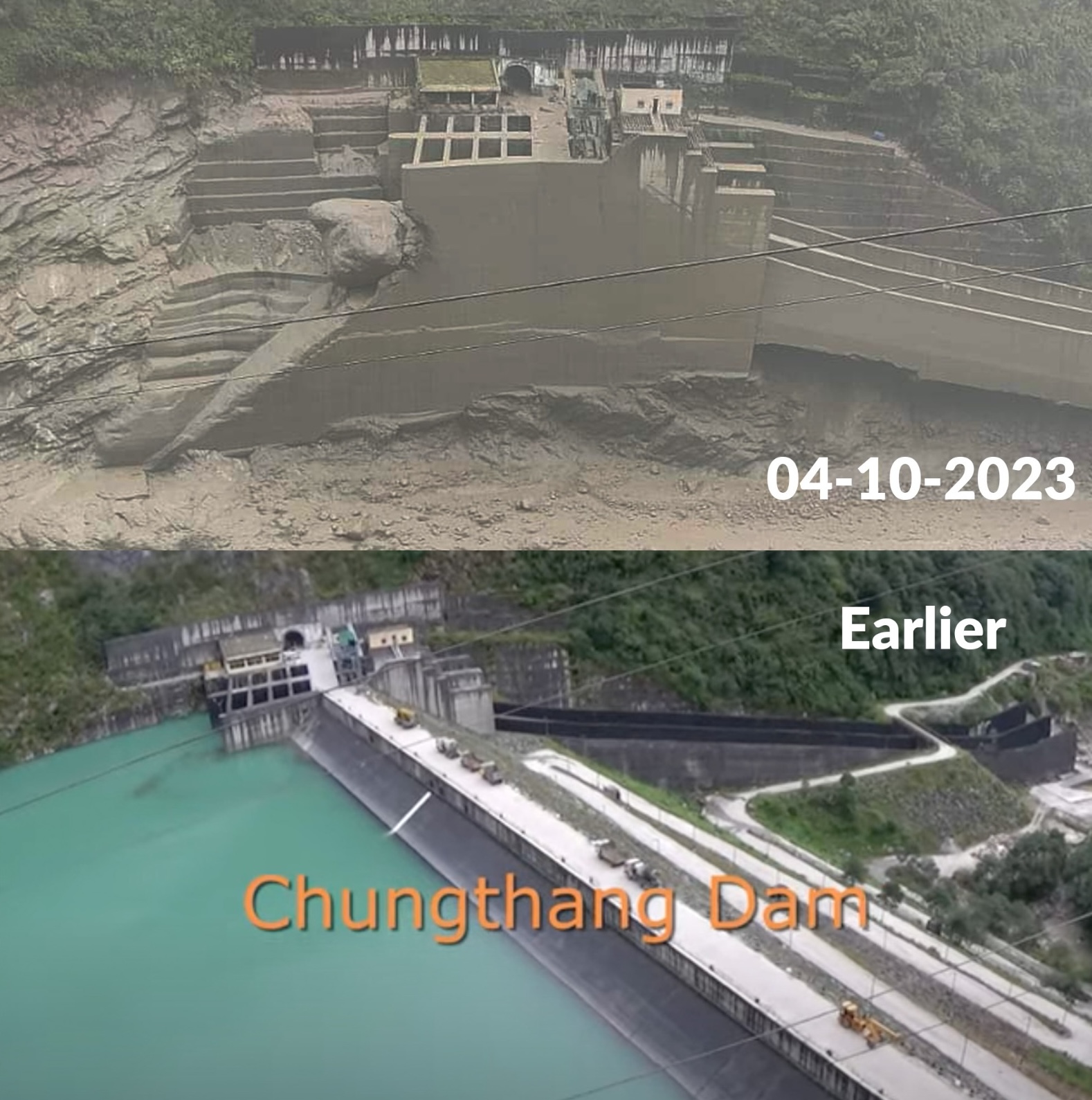We watch with grave concern the news that the Chungthang dam (also called Teesta III) has been destroyed as a result of torrential rains and a glacial lake outburst flood (GLOF) upstream on the Teesta River in the state of Sikkim, India in the early hours of October 4, 2023. As of October 16, more than 30 people are confirmed to have been killed by the resulting floods and over 70 people still missing. The flood waters washed away several bridges and sections of the main National Highway 10, which cut off access for multiple villages.
The Teesta is a transboundary river, and its flood waters travel downstream to West Bengal and then into Bangladesh, where thousands more could be impacted. This disaster has already affected more than 22,000 people, according to recent reports.
Glacial lake outburst floods occur when a glacial lake overflows and bursts. These events become a more regular occurrence as climate change has accelerated glacial melt, and are particularly concerning in South Asia where they pose a significant threat to dams and communities that live downstream. This is particularly true as hydropower dams continue to be constructed in areas prone to GLOFs, seismic activity and climate change, which are among the reasons communities in Sikkim and elsewhere have opposed the construction of new dams on their rivers.
In a statement, Sunil Saraogi, the executive chairman of the corporation that built the dam over a nine-year period, explained how quickly the dam was destroyed: “Such was the force of the water that the dam at Chungthang was washed away in just ten minutes.”
Local groups, like the Affected Citizens of Teesta (ACT), have been protesting the building of large dams for over 15 years and urging people to join them to keep the Teesta River free-flowing. Yet their warnings about potential disasters like this one have gone unheeded. “We knew that this was coming, and this has finally proved true.” said Gyatso Lepcha, general secretary of ACT. “The same can happen with other dams also,” he said, seeking a safety review of all dams in Sikkim.
Climate change and extreme weather events are making mega-infrastructure in the ecologically sensitive Himalayas more dangerous. We strongly urge the governments of India, Sikkim, and all those concerned to reconsider the building of large dams in regions prone to earthquakes, landslides, and glacial melting.
Our thoughts are with our partners in Sikkim and those who have lost or are missing loved ones.
Last update: Monday, October 16, 2023
Photo image of Chungthang dam (also called Teesta III) before and after by Veditum.

